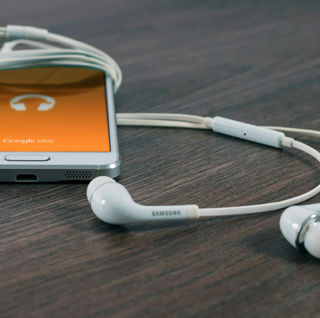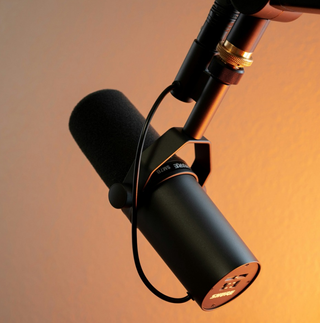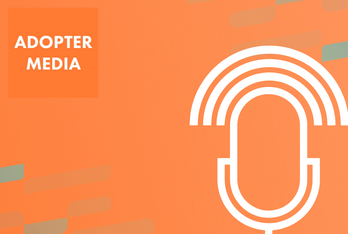Perhaps more than any other marketing channel, podcast attribution has the ability to get really dark, really quickly.
When we say “dark,” we’re talking about the lack of clarity and information that often plagues ecommerce marketing teams—especially as they try to string together a complete picture of how a consumer goes from hearing an ad read for a product on their favorite podcast to actually making a purchase.
Historically, this has required a little bit of guesswork and a lot of extrapolation from direct attribution approaches like tracking promo code redemption, UTMs, and pixels. But these methods aren’t a perfect fit for audio-first marketing channels where a large portion of the consideration process can happen offline, and where digital attribution doesn’t capture all the possible customer-reported sources of influence on a purchase.
Here’s how podcast advertising agency ADOPTER Media uses direct-from-consumer, zero party data—captured in post-purchase “How did you hear about us?” surveys—to take a step into the light and get a better view of just how much podcast advertising is actually impacting their clients’ revenue.

How Ecommerce Brands Use Fairing to More Accurately Attribute the Impact of Podcast Advertising Campaigns
When it comes to tackling podcast attribution, Adam McNeil has been around the block a few times.
As part of the marketing team at Füm, he used Fairing post-purchase survey insights to uncover grassroots customer growth via organic podcast mentions—which led to a 25x increase in podcast spend that ultimately revived Füm’s business.
McNeil now works on the agency side as the VP of Marketing for ADOPTER Media, where he manages podcast advertising for Fairing customers like Blissy, Rhone, and other successful DTC brands—and continues to deploy post-purchase surveys in Fairing as part of his holistic attribution strategy.
“Podcast advertising is so difficult because attribution is so difficult,” said McNeil. “It’s this weird mix of being both digital and offline, being completely measurable in some aspects and not measurable at all in others. Customer surveys are really the best ways we’ve found to fill that gap where digital attribution falls short.”
Here’s how McNeil gets the most out of Fairing for his client companies:
1. Keep it simple: Ask your customers how they found you.
Fairing’s ease-of-use, seamless connection into the Shopify post-purchase flow, and high response rates make it easier than ever to simply ask your customers how they found you.
For McNeil, Fairing’s straightforwardness and lack of complexity is a pro, not a con.
“Every marketer wants everything to feel super complicated, so they can have some sense that they’re doing this great job nobody else can do, maybe feed their ego a bit?” said McNeil. “This doesn't have to be complicated.”
In addition to the bread-and-butter “How did you hear about us?” question, McNeil’s clients (especially those who devote a large percentage of their overall marketing budget on podcasts or creators) have found success incorporating questions like “What’s your favorite podcast?” or “Which podcasts do you listen to?” into their Question Stream.
“Again, it’s a really simple question, but it helps us flesh out a general idea of who our consumer base is and understand what other show audiences we should be chasing after that aren’t on our radar yet.”
2. Supplement attribution gaps with insights into your customers’ “dark” purchase journey
Next, McNeil takes the zero party data Fairing collects from customers and reconciles it against all the other attribution work these brands do. This helps him see where certain podcast shows are having an outsized impact on sales that traditional digital attribution tools are attributing to something else entirely.
By surveying his customers directly in Fairing, Adam also uncovers which “digital breadcrumbs” in attribution tools are actually red herrings that brands can safely ignore. For example, if a customer hears about a product on multiple podcasts, but forgets to use a coupon code, forgets your custom URL and makes it to your site from a Google Search—was “organic search” really responsible for the sale?
Think you’ve got your podcast advertising attribution covered with coupon codes, UTMs, and pixels alone? Think again.
Adam McNeil breaks down the natural gaps that form in these “Big Three” direct attribution methods when your customers buy like human beings—and shows how post-purchase surveys paint a fuller picture of what’s actually driving sales:
3. Track your lift multiplier and spend accordingly
Once he’s validated his attribution data with customer survey responses, McNeil calculates a “lift multiplier” to identify both how much his client should be spending on podcasts as a channel based on more accurate CPAs, and where they should be spending on the show-level based on campaign performance.
Simply put, a podcast multiplier (or any attribution multiplier, for that matter), is the difference in directly attributable purchases (through tracking links or coupon codes) and indirectly attributable purchases (post-purchase survey data). For example, if 10% of purchases used a podcast coupon code, but 20% of survey respondents heard about the brand through a podcast, the brand’s podcast multiplier should be 2.0x. For a statistically significant sample size, this multiplier can then be applied to the podcast advertising campaign’s metrics.
(Make sure to check out our full article here for a complete methodology calculating your multiplier.)
How Fairing Helps Ad Agencies Deliver Better Client Experiences
Fairing doesn’t just help ecommerce companies better track the performance of their campaigns so they can sell products more efficiently. It helps their agency partners, too.
McNeil identified three distinct ways that running post-purchase surveys on Fairing has enabled him to be a more impactful agency partner to his clients—and deliver better podcast advertising performance on a consistent basis:

Stacking Wins Quickly Through the Power of Real-Time, Direct-from-Customer Data
Hesitancy, uncertainty, and misinformation around where your customers are coming from is a slow death for online businesses. It can also lead to tension in the agency-client relationship when promised results aren’t showing up fast enough.
For brands, waiting until a quarterly email survey to gather direct-from-consumer data could mean that their customers may have entirely forgotten where they heard about you by then, or misremembered critical touchpoints that motivated them to buy
Because the Fairing Question Stream is appended right at the post-checkout experience in Shopify, brands and agencies alike are able to move quickly with real-time insights. For McNeil, that ability to provide strategic recommendations and ship campaign optimizations in hours or days instead of weeks and months is critical to maintaining satisfied clients.
Identifying Winning Podcasts and Growing Cult Followings—Then Striking While the Iron is Hot
McNeil not only values Fairing for the insights it provides for tracking lift on planned campaigns, but for the way it’s able to uncover unpaid mentions, potentially lucrative new partnership opportunities, and burgeoning fandoms that his clients would otherwise have zero knowledge of.
“People will message and leave notes in their post-purchase survey of this show and that show they heard about us on, and it might not even be a show we even advertised on,” said McNeil. “But we can go hunt down that soundbite and reach out to that show for paid advertisement, because we already know there’s at least some show-audience fit in place. It’s worked out well whenever we’ve done that.
McNeil would know—as VP of Marketing at Füm, the brand went viral thanks to a mention on The Joe Rogan Experience, something they would not have known about if not for Fairing.
“You get these little anecdotal pieces of content that are so brilliant, and you can pull so much anecdotal data out of Fairing to make better buys and be better influenced into pushing in the right direction. It's like you can start to see where your audiences are collectivizing under a banner of different podcasts or content creators.”
Helping the Client Build Trust in Your Agency
McNeil has a hard time imagining he’d ever go back to not utilizing post-purchase surveys with podcasting ads going forward.
“Without a post purchase survey like what we do in Fairing, you are leaving a lot of attributable revenue in the wind,” said McNeil. “Without a post purchase survey, it feels like I am buying ads with handcuffs on.”
Leave The Dark Ages of Podcast Attribution Behind
Don’t let traditional digital attribution tools leave you in the dark about your podcast advertising performance.
By using Fairing to ask your customers what’s working, where it’s working, and why it’s working, marketing teams and the agencies that support them can properly invest in one of the top advertising channels in recent years.






